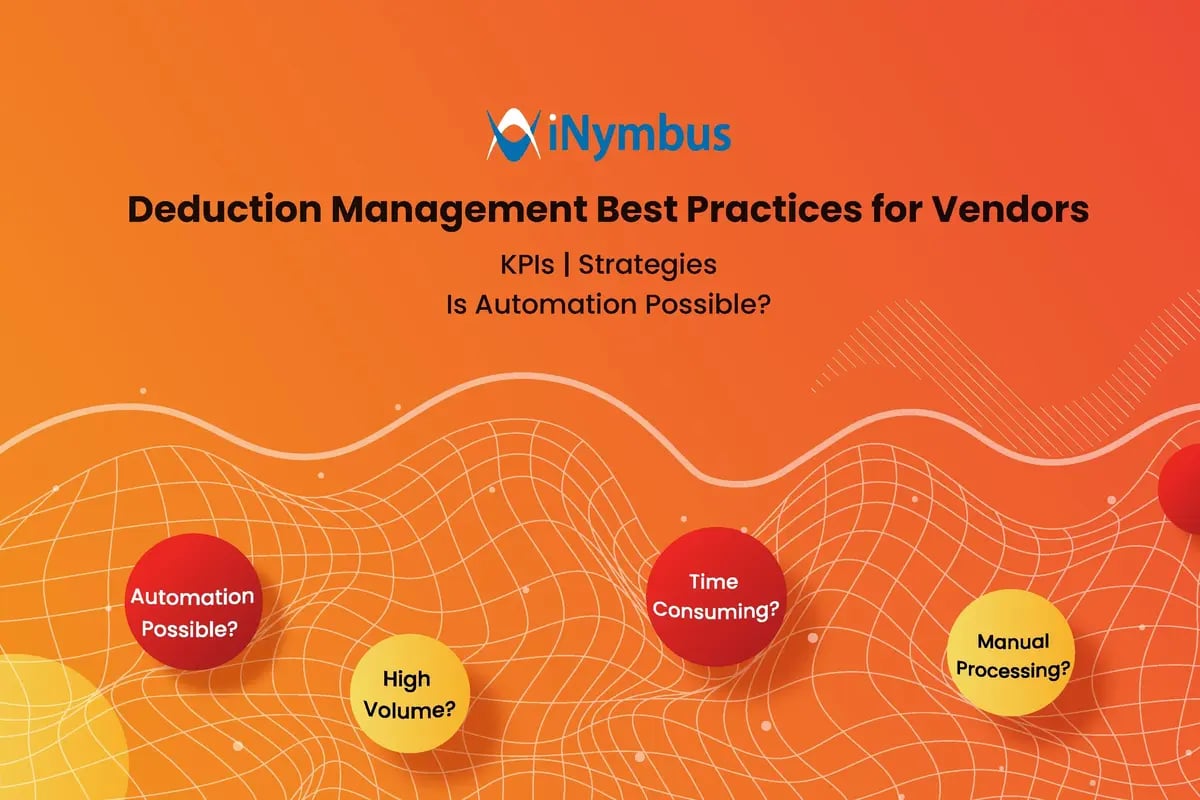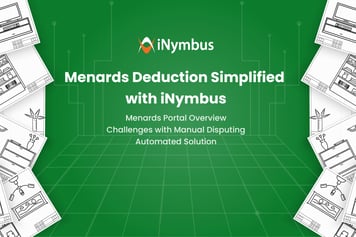Deduction Management Best Practices for Vendors

Many businesses are victims of poor deduction management practices. These practices not only burden the company with wasted time but also include hidden costs like missed opportunities and lower productivity. Further, errors and delays only add to the expenses and hurt financial health.
There is high value in implementing deduction management best practices to streamline processes and maximize revenue recovery. In this article, we will explore the challenges associated with deduction management and discuss the essential best practices that vendors should adopt to address these challenges effectively.
The Key Challenges of Deduction Management
Before we talk about the best practices, let's check out the main problems that businesses usually deal with.
1. High Volume and Complexity of Deductions:
The volume and complexity of deductions have grown in recent years. Increased volume usually means training more personnel to identify, evaluate, and manually upload claims to retailer portals. Since each portal varies in terms of navigation, data, and documents required, a steep learning curve is always involved. Furthermore, the challenge intensifies when deductions originate from email disputers like Walgreens and Nordstrom, as this necessitates curating emails for each disputed deduction, adding an additional layer of complexity to the process.
2. Manual Processes:
The manual process of claiming deductions proves to be cumbersome and time-consuming for several reasons. Firstly, locating invoices with deductions proves challenging as each retailer operates through its unique portal, necessitating different navigation methods for each. Moreover, the terminology employed by retailers varies, with some providing direct explanations for deductions while others employ deduction codes.
These hurdles are compounded when it comes to filing claims for these deductions. Detailed descriptions must be provided for each deduction to justify its invalidity. Subsequently, communication with various departments within the company is necessary to arrange the required documentation for proof.
3. Lack of Visibility:
Vendors often need help to identify and resolve deductions when deductions are not tracked in real time. Moreover, there is a lack of a unified view of deductions from all retailers. This can lead to a lack of understanding of the root causes of deductions, making it difficult to address and prevent them in the future. This can result in inefficiencies, errors, and delays in dispute resolution.
Deduction Management Best Practices For Optimizing Workflow
-
Prioritizing Deductions:
Not all deductions are equally important. Some might be small and straightforward to solve, while others could be big and require multiple documents as proof. With proper prioritization of unresolved disputes, businesses can address important issues on time. This way, businesses can reduce delays and longer wait times in resolving issues. -
Incorporating Standard Operating Procedures (SOPs):
The standard operating procedure ensures consistency, efficiency, and accuracy in handling deductions. It is a step-by-step guide that everyone follows whenever a deduction comes up. This consistency makes the process smoother and more efficient. Instead of everyone doing things differently, they all follow the same clear instructions, which helps avoid confusion and mistakes. -
Conducting Root Cause Analysis:
When something goes wrong, it's important to figure out why it happened in the first place. Root cause analysis enables organizations to identify and address the underlying issues causing deductions. By understanding why deductions occur, you can take steps to prevent them from happening again in the future, saving time and resources in the long run. -
Developing Key Performance Indicators (KPIs):
Key Performance Indicators help businesses measure how well they are doing. If you can't measure it, you can't improve it. Businesses can track things like how quickly deductions are resolved or how many deductions occur each month. This data helps you identify areas for improvement and identify meaningful insights within your deduction landscape. -
Centralize Deduction Management:
Vendors have to manage a lot of complex information and processes when dealing with deductions from many retailers, leading to a messy workload. Centralizing deduction management makes the process easier, gives better visibility, and resolves all related issues quickly.
Is Full Automation Possible for These Processes?
Yes, it is indeed entirely possible. Allow me to introduce iNymbus, an automated deduction management software designed to streamline the process of dispute resolution from start to finish. Leveraging RPA (Robotic Process Automation) technology, our software simplifies the entire journey.
Following onboarding and the establishment of SOPs tailored to your business, iNymbus takes charge, automating tasks from identifying and validating claims to uploading documents to the retailer's portal and filing claims on your behalf. With iNymbus, the process becomes seamless and efficient, providing numerous advantages along the way. Let's have a look at a few of them:
- Faster Disputes: With iNymbus, disputes are resolved up to 30 times faster than traditional manual processes, accelerating the resolution timeline significantly.
- Reduced Administrative Burden: iNymbus alleviates the administrative burden by automating tasks such as claim identification, validation, document uploading, and filing, allowing personnel to focus on higher-value activities. Discover how we assisted one of our clients in clearing years of backlog by automating Walmart deduction management for them.
- Centralized Deduction Management: iNymbus comes with a centralized platform that provides a unified view of deductions from all retailers, offering improved visibility for monitoring and managing deductions in one place.
- Data-Driven Decision-Making: iNymbus provides advanced data analysis for insightful KPIs, charts, and reports. With this, vendors can understand patterns and trends to conduct root cause analysis and prevent issues.
- Scalability and Flexibility: iNymbus is a cloud-based robotic process automation (RPA) deduction software that is scalable for businesses of any size and flexible to meet specific needs.
We pride ourselves on providing comprehensive support to our clients, going beyond just disputing deductions. With our sophisticated data analysis tools and expertise, we offer assistance in not only challenging deductions but also in strategically reducing valid claims.
Conclusion
In short, managing deductions can be tough due to poor deduction management practices. They can lead to wasted time and hidden costs like missed opportunities and lower productivity. Using best practices may help improve workflow and maximize revenue recovery. But an automated system like iNymbus is even better. It handles tasks automatically, provides helpful insights, and makes managing deductions much easier.





